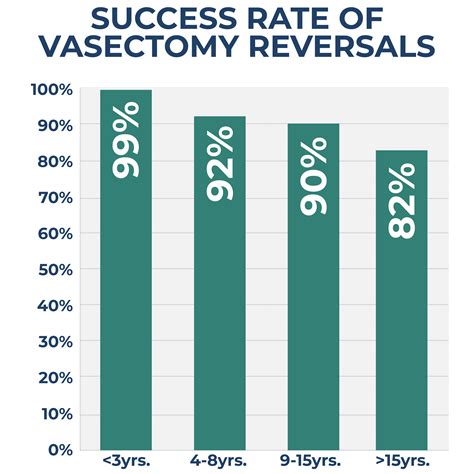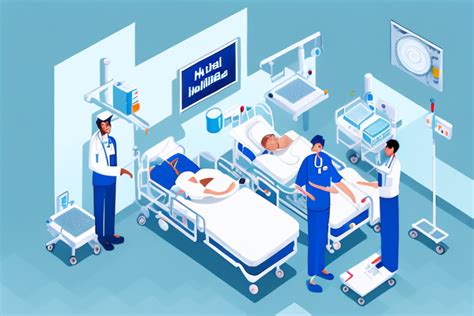Intro
Discover Vasectomy Reversal success rates, factors, and techniques for optimal fertility restoration, including microsurgical reversal, pregnancy outcomes, and specialist expertise for improved chances of conception.
The decision to undergo a vasectomy reversal is a significant one, and understanding the success rates of this procedure is crucial for individuals considering it. Vasectomy reversal, also known as vasovasostomy, is a surgical procedure that aims to restore fertility in men who have previously undergone a vasectomy. The success of the procedure depends on various factors, including the time elapsed since the vasectomy, the age of the patient, and the surgeon's expertise. In this article, we will delve into the world of vasectomy reversal, exploring the factors that influence success rates, the benefits and risks associated with the procedure, and what to expect during and after the surgery.
The importance of understanding vasectomy reversal success rates cannot be overstated. With approximately 500,000 vasectomies performed annually in the United States alone, a significant number of men may eventually seek reversal due to changes in family planning goals or personal circumstances. The ability to make informed decisions about one's reproductive health is fundamental, and having a clear understanding of the potential outcomes of vasectomy reversal is essential for men and their partners. As we navigate the complexities of vasectomy reversal, it is essential to consider the emotional, physical, and financial implications of this procedure, ensuring that individuals are well-equipped to make decisions that align with their unique situations and goals.
Vasectomy reversal is a delicate and intricate procedure that requires great skill and precision. The surgery involves reconnecting the severed vas deferens, the tubes that carry sperm from the testicles to the penis, to restore the flow of sperm. The procedure can be performed using various techniques, including vasovasostomy, vasoepididymostomy, or a combination of both. The choice of technique depends on the individual's specific circumstances, such as the presence of blockages or scar tissue. As we explore the world of vasectomy reversal, it is essential to recognize the significance of this procedure in restoring fertility and providing individuals with a second chance at fatherhood.
Vasectomy Reversal Success Rates

Factors Influencing Success Rates
Several factors can influence the success rates of vasectomy reversal, including: * Time elapsed since the vasectomy: The longer the time since the vasectomy, the lower the success rate. * Age of the patient: Men over 40 years old may have lower success rates due to declining sperm quality and quantity. * Surgeon's expertise: A skilled and experienced surgeon can significantly impact the success rate of the procedure. * Presence of blockages or scar tissue: The presence of blockages or scar tissue can make the procedure more challenging and reduce the success rate. * Overall health of the patient: Certain medical conditions, such as diabetes or high blood pressure, can affect the success rate of the procedure.Benefits of Vasectomy Reversal

Risks and Complications
While vasectomy reversal is generally a safe procedure, there are potential risks and complications to consider, including: * Infection: As with any surgical procedure, there is a risk of infection with vasectomy reversal. * Bleeding: Excessive bleeding or hematoma can occur during or after the procedure. * Scarring: The procedure can result in scarring, which may affect the success rate of the reversal. * Failure to restore fertility: There is a risk that the procedure may not be successful in restoring fertility. * Recurrence of vasectomy: In some cases, the vasectomy may recur, requiring additional surgery.What to Expect During and After Vasectomy Reversal

Post-Operative Care
To ensure a smooth recovery and optimal outcomes, patients should: * Follow the surgeon's instructions for post-operative care * Avoid heavy lifting, bending, or strenuous activities for several weeks * Wear supportive underwear or a jockstrap to reduce swelling and discomfort * Attend follow-up appointments with the surgeon to monitor progressVasectomy Reversal and Pregnancy

Emotional and Financial Considerations
Vasectomy reversal can be an emotionally and financially challenging experience for individuals and couples. The procedure can be costly, and insurance coverage may vary. Additionally, the emotional toll of undergoing a surgical procedure and the uncertainty of outcomes can be significant. To mitigate these challenges, individuals and couples should: * Discuss their options and expectations with a qualified healthcare provider * Explore financing options and insurance coverage * Seek emotional support from partners, family, and friends * Consider counseling or therapy to cope with the emotional aspects of the procedureConclusion and Next Steps

What is the success rate of vasectomy reversal?
+The success rate of vasectomy reversal varies depending on several factors, including the time elapsed since the vasectomy, the age of the patient, and the surgeon's expertise. Generally, the success rates range from 70-80% for men who undergo vasectomy reversal within 3 years of the original vasectomy to 20-30% for men who undergo vasectomy reversal 15 or more years after the original vasectomy.
How long does it take to recover from vasectomy reversal?
+The recovery time for vasectomy reversal varies depending on individual circumstances. Most men can return to normal activities within 1-2 weeks, while others may take longer to recover. It is essential to follow the surgeon's instructions for post-operative care to ensure a smooth and optimal recovery.
Can I get pregnant after vasectomy reversal?
+Yes, it is possible to get pregnant after vasectomy reversal. The likelihood of pregnancy depends on various factors, including the quality and quantity of sperm, the age and fertility of the female partner, and the presence of any underlying medical conditions. Couples can increase their chances of conception by having regular, unprotected intercourse during the fertile window and maintaining a healthy lifestyle.
How much does vasectomy reversal cost?
+The cost of vasectomy reversal varies depending on several factors, including the surgeon's fees, hospital costs, and insurance coverage. On average, the cost of vasectomy reversal can range from $3,000 to $15,000 or more. It is essential to discuss financing options and insurance coverage with a qualified healthcare provider to determine the best course of action.
Is vasectomy reversal covered by insurance?
+Insurance coverage for vasectomy reversal varies depending on the insurance provider and policy. Some insurance plans may cover the procedure, while others may not. It is essential to discuss insurance coverage with a qualified healthcare provider to determine the best course of action.
We invite you to share your thoughts and experiences with vasectomy reversal in the comments below. If you have any questions or concerns, please do not hesitate to reach out to a qualified healthcare provider. By working together, we can provide valuable insights and support to individuals and couples navigating the complex world of vasectomy reversal.
